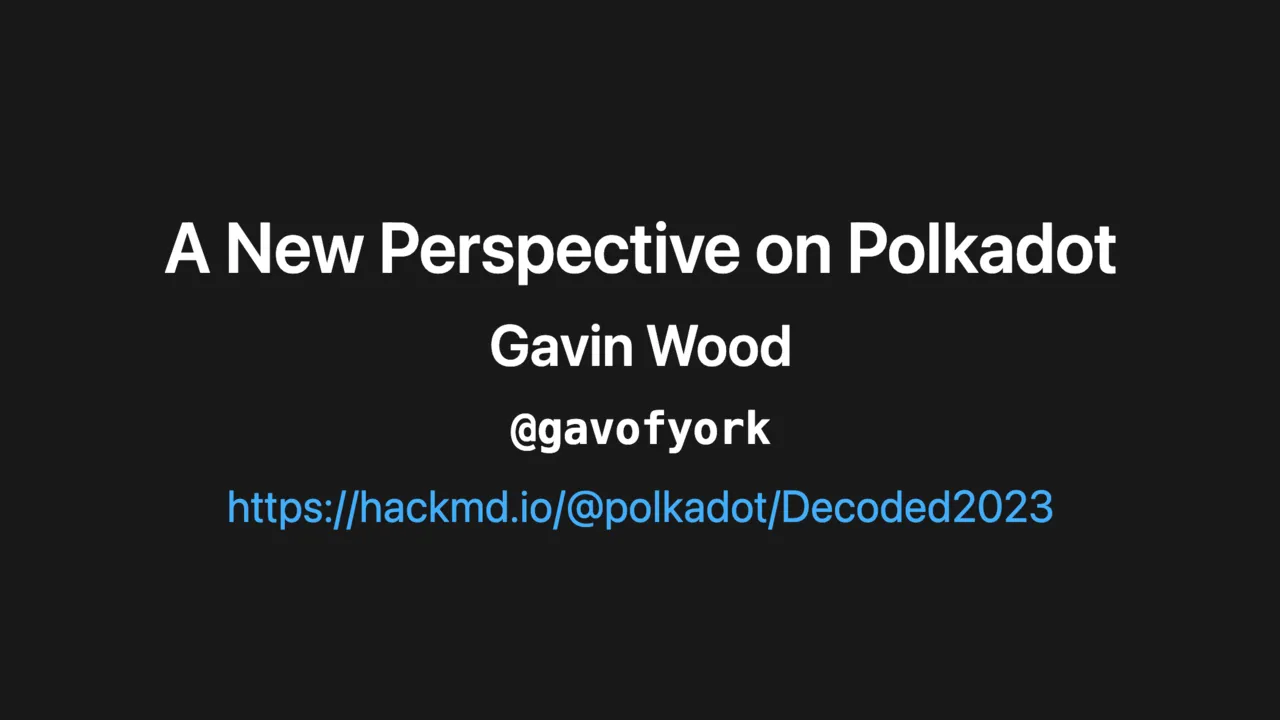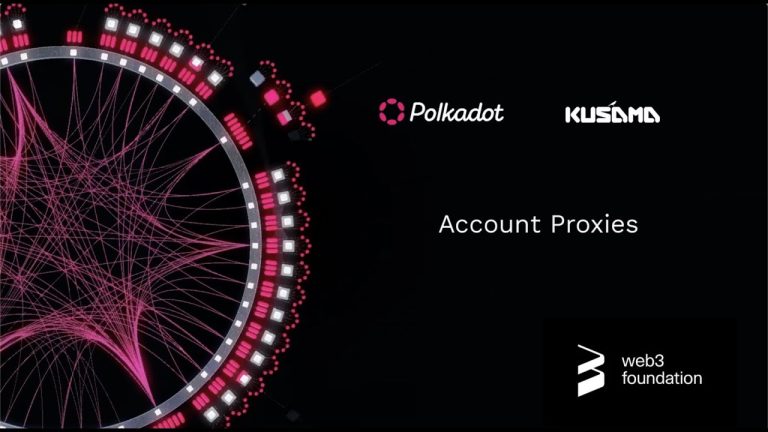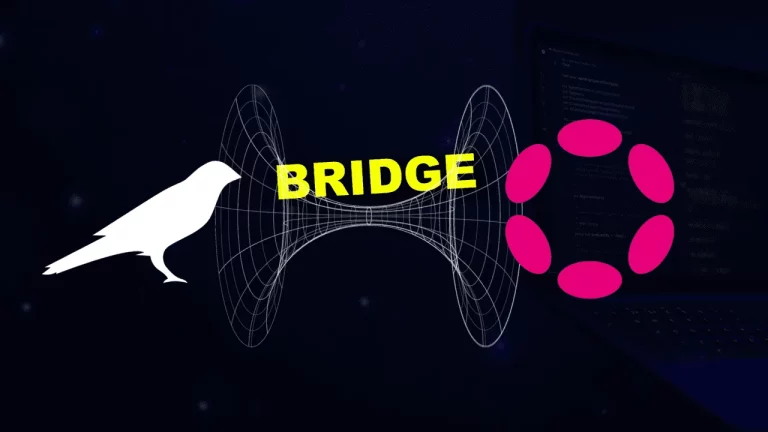At the Polkadot Decoded 2023 conference in Copenhagen, Dr. Gavin Wood, co-founder of Polkadot, delivered an insightful keynote emphasizing a paradigm shift in understanding Polkadot’s potential. Wood envisions Polkadot evolving into a global supercomputer, a ubiquitous and agile computational resource, moving beyond its original design as a blockchain of blockchains.
Link to the slides from the keynote (+60 slides).
Polkadot 1.0: A Foundation of Chains and Parachains
Wood began by revisiting the origins of Polkadot, which was conceptualized as a scalable, heterogeneous multi-chain platform. Polkadot 1.0, soon to be released, embodies this vision with a relay chain at its core, securing and connecting various parachains. These parachains benefit from shared security and interoperability, essential for a robust blockchain ecosystem.
The initial design of Polkadot, as described in Wood’s original paper, focused on creating a network where independent blockchains (parachains) could operate concurrently while being secured by a central relay chain. This architecture ensures that each parachain inherits the security of the entire network, allowing for a more scalable and flexible system. Polkadot 1.0 marks a significant milestone, as it delivers on this vision by enabling multiple blockchains to interact seamlessly, paving the way for more complex and integrated blockchain applications.
Shifting Perspectives: From Chains to Space
However, Wood’s keynote took a significant turn as he proposed a new perspective: Polkadot is less about chains and more about space—the computational resources these chains utilize. He introduced the idea of Polkadot as a multi-core supercomputer, each core representing a portion of computational bandwidth and power available for various tasks. This shift in perspective highlights Polkadot’s capability to provide resilient, general-purpose computation across its network.
By viewing Polkadot as a supercomputer, Wood emphasizes the platform’s ability to manage computational resources dynamically. Instead of focusing solely on individual blockchains, the new model views the entire network as a collection of computational units (cores) that can be allocated as needed. This approach allows for more efficient use of resources, enabling the network to support a wider variety of applications and use cases. Wood’s vision positions Polkadot as a versatile platform capable of adapting to different computational demands, enhancing its overall resilience and utility.
Agile Polkadot: Introducing Agile CoreTime
To maximize the utility of Polkadot’s computational resources, Wood suggested moving away from the rigid slot auction model to a more agile approach. He proposed two types of sales for core time: bulk and instantaneous. Bulk sales would occur monthly, providing four weeks of core time at a fixed price, while instantaneous sales would cater to immediate, on-demand needs. This flexibility would lower barriers to entry, fostering innovation and experimentation within the Polkadot ecosystem.
The current slot auction model, which allocates resources for extended periods, can be restrictive and create high entry barriers for smaller projects or individual developers. By introducing core time sales, Polkadot aims to democratize access to its computational power. Bulk sales ensure that resources are available at predictable intervals, while instantaneous sales provide flexibility for projects with varying needs. This model encourages more participation and experimentation, potentially leading to innovative applications and broader adoption of the Polkadot network.
Enhancing User Experience: Applications Over Chains
Another critical shift proposed by Wood is moving from a chain-centric to an application-centric paradigm. In Polkadot 1.0, the focus was on isolated chains communicating via the relay chain. However, Wood emphasized the need for seamless user experiences across chains. He introduced the concept of Accords, opt-in treaties that ensure consistent, cross-chain functionality without compromising the sovereignty of individual chains. This would enable applications to span multiple chains, providing a unified experience for developers and users alike.
Wood pointed out that a chain-centric approach often leads to fragmented user experiences, where users have to navigate multiple chains to access different services. By shifting the focus to applications, Polkadot aims to streamline interactions and make the underlying blockchain architecture transparent to the user. Accords facilitate this by establishing standardized protocols that chains agree to follow, ensuring interoperability and consistency. This approach not only enhances the user experience but also simplifies development, as applications can operate seamlessly across the entire Polkadot network.
Leveraging XCM and Accords
Wood also highlighted the importance of XCM (Cross-Consensus Messaging) and proposed enhancements to ensure secure, trustless interactions between chains. By introducing Accords, Polkadot can offer binding agreements for specific functionalities, such as asset transfers or decentralized exchanges, ensuring reliability and security across the network.
XCM is Polkadot’s protocol for cross-chain communication, allowing messages and assets to be transferred securely between different parachains. However, Wood acknowledged that the current implementation has limitations, particularly regarding trust and security. Accords address these issues by providing a framework for binding agreements that chains must adhere to. This ensures that cross-chain interactions are not only possible but also secure and reliable. By enhancing XCM with Accords, Polkadot can support more complex and interdependent applications, further leveraging the network’s capabilities.
Future Directions: Enhancing Resilience and Decentralization
In the final segment of his keynote, Wood underscored the importance of building resilient systems. He pointed out the vulnerabilities of centralized systems and advocated for broader adoption of like-client usage and advanced cryptographic primitives. He introduced Saphras, a new forkless consensus mechanism, and the upcoming internode mixnet, both designed to enhance Polkadot’s security and performance.
Wood stressed that resilience is crucial for Polkadot’s long-term success. Centralized systems are prone to failures and attacks, making decentralization and cryptographic security essential. Saphras, a forkless consensus mechanism, aims to improve security by ensuring that blocks are only produced when they are expected to be finalized. This reduces the risk of forks and enhances the overall stability of the network. The internode mixnet, a shielded transport protocol, protects user privacy by preventing IP address leakage. These innovations demonstrate Polkadot’s commitment to building a robust and secure platform.
Governance and Human Decentralization
Wood emphasized the need for human decentralization, involving more individuals in governance and maintenance of the network. He stressed the importance of decentralized governance structures, wealth management, and incentivizing experts to contribute to Polkadot’s growth and resilience.
Effective governance is vital for maintaining a decentralized network. Polkadot’s governance model aims to involve a broad range of stakeholders, ensuring that decisions are made collectively and transparently. This includes managing resources, funding development, and maintaining the network’s infrastructure. By incentivizing experts and community members to participate in governance, Polkadot can leverage a diverse pool of knowledge and skills, enhancing its resilience and adaptability. Wood highlighted the importance of continuous recruitment and retention of talent to ensure the network’s long-term sustainability.
Conclusion: Building a Resilient Future
Wood concluded by reiterating Polkadot’s mission to provide a resilient, adaptable platform capable of withstanding various challenges. He emphasized that the true value of Polkadot lies in its ability to adapt and thrive in a changing world, driven by innovation, collaboration, and a commitment to decentralization.
In summary, Gavin Wood’s keynote at Polkadot Decoded 2023 highlighted a transformative vision for Polkadot as a global supercomputer, emphasizing agility, application-centric development, and resilience. This new perspective sets the stage for Polkadot to continue evolving and meeting the needs of its growing ecosystem.








